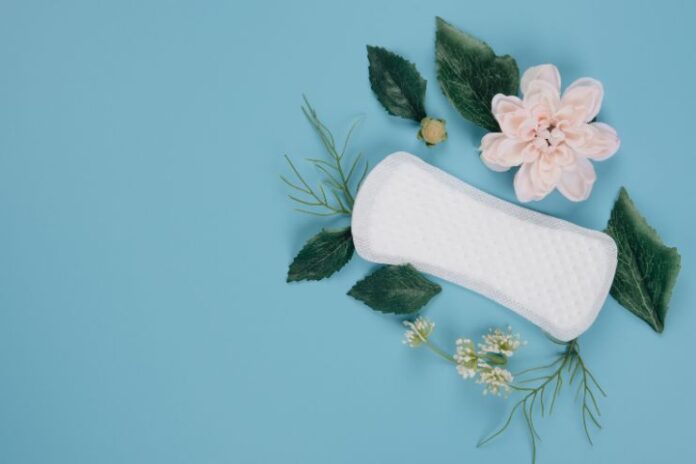Like many women, I never questioned what was in my period products—until I did. I started noticing occasional irritation, a lingering discomfort, and growing concerns about what I was actually putting near one of the most sensitive areas of my body.
It turns out that the majority of standard pads are made of synthetic materials, toxic chemicals such as PFAS (called “forever chemicals”), and artificial scents. Some of these chemicals have been associated with hormone disruption, skin irritation, and even heightened health risks with prolonged exposure.
So, I tried something else. For two months, I switched to organic sanitary pads made from cotton and other natural materials—without chlorine, dyes, and artificial additives. I was curious if this would make a significant difference in comfort, flow control, and general peace of mind.
Would the switch be worth the extra cost? Could it really relieve irritation and help me feel better overall? Over the next few paragraphs, I’ll share exactly what improved, what stayed the same, and what surprised me most about going organic during my cycle.
Read More: Best Non-Toxic Period Products for Healthier Cycle
Why I Made the Switch

I’d never considered what was in my sanitary pads until I began getting irritation and itching during my periods.
That pain, combined with growing awareness of toxic chemicals in traditional pads, prompted me to explore.
Curiosity About Ingredient Transparency
It all began with a question: What’s really in my pads? Like many women, I never really took the time to read the ingredients until I started feeling uncomfortable during my period.
When I researched it, I was amazed to find out that most mainstream pads include artificial materials, chlorine bleach, and even chemical perfumes. That’s when I seriously started looking into switching to organic menstrual products.
Sensitive Skin and Irritation with Conventional Pads
Over time, I experienced frequent irritation and occasional rashes during my cycle. I assumed it was just a part of having sensitive skin until I realized my pads might be the problem.
Regular pads, with their plastic top sheets and chemical-laden components, can trap heat and moisture, making things worse. When I learned that biodegradable sanitary pads are gentler and more breathable, it felt like an easy switch to try.
Rising Awareness About Sustainability and Endocrine-Disrupting Chemicals
The more I read, the more concerned I became about the long-term health risks of conventional pads, especially endocrine-disrupting chemicals like phthalates and dioxins.
At the same time, I became more eco-conscious and wanted to reduce my environmental footprint. Sustainable period products, made from organic cotton and natural materials, seemed like a win-win for my body and the planet.
Wanted to Support Eco-Conscious and Body-Safe Brands
Apart from personal health, I wanted to back brands that are concerned about ethical production, transparency, and sustainability. Opting for sustainable period products was a tiny but significant step towards living consciously.
Therefore, I decided to use organic pads for a full two cycles to experience what would really make a difference.
Read More: Ease Period Symptoms with these Drinks
What Organic Pads Claim to Offer
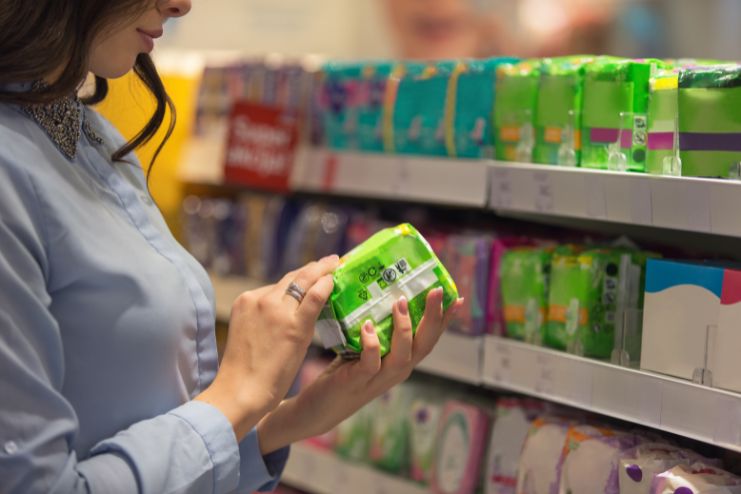
Organic pads are gaining popularity for all the right reasons. The organic pads review breaks down why they’re becoming the go-to sensitive skin period products for many women.
Made with 100% Organic Cotton – No Chlorine, Dyes, or Synthetic Fragrances
One of the biggest promises of organic pads is what they don’t contain. In contrast to conventional pads, which are often made with harsh chemicals and synthetic fibers, organic pads are made entirely of certified organic cotton. That means they are bleach-free, artificial dye-free, and fragrance-free—ingredients that can be too harsh for sensitive skin.
The intention is to stay as natural as possible, minimizing the risk of toxic chemical exposure during menstruation. It’s a smart choice if you’re looking for chemical-free feminine hygiene options.
Hypoallergenic and Gentler on Sensitive Skin
If you have sensitive skin or have suffered from rash or irritation during your period, organic pads may provide some comfort. Since they are free of synthetic materials and harmful additives, these pads have less likelihood of causing an allergic reaction.
They are sometimes called hypoallergenic pads, which makes them the ideal product for sensitive skin during periods. For many women, they can mean less discomfort and a more comfortable period overall.
Biodegradable and Better for the Planet
Another notable benefit of biodegradable sanitary pads is that they are “green.” Regular pads can take hundreds of years to decompose because they are made of plastic.
Organic pads break down much more quickly and use materials that are better for the environment. This is a big sustainability win for organic pads compared to regular pads.
Designed to Be Breathable, Absorbent, and Non-Irritating
Even though they’re natural, they won’t let you down on performance. Sustainable period products are supposed to be absorbent and leak-proof, just like regular pads.
In addition to being absorbent, they are breathable and non-irritating, meaning you don’t feel ‘icky’ even when it’s your time of the month.
Read More: Regulate Your Period with Golden Milk
Week-by-Week Changes I Noticed
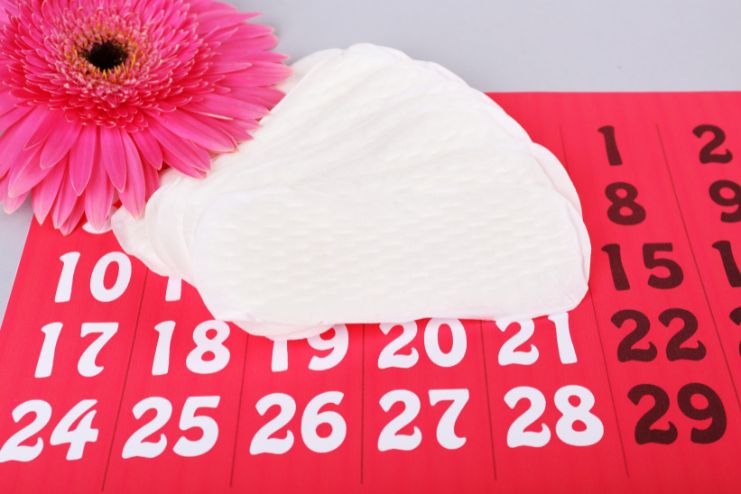
Adopting organic menstrual products contributed to gradual yet noticeable improvements. Skin comfort, odor control, and everything in between, here’s why each week improved my experience with a cleaner, more mindful period routine.
Month 1: Early Impressions and Adjustments
- My skin was calmer and less reactive, with fewer irritations and itchiness, particularly on heavier flow days.
- The pads felt softer, lighter, and more breathable than regular ones, making a big difference in comfort.
- Took time to figure out the right brand, absorbency, and fit. Not all organic options are the same.
- Became more mindful about ingredients, realizing how many chemicals I’d previously overlooked.
- This phase helped me see how menstrual health and organic products are deeply connected.
Month 2: Comfort and Awareness Grows
- No more period rash from pads, even after overnight wear, my skin stayed irritation-free.
- Noticed less smell, probably because of the lack of artificial fragrances and improved ventilation in the pad material.
- The light, airy fabric made me feel fresh, particularly in warmer weather.
- Realized how plasticky and chemical-y regular pads felt compared to organic ones.
- Appreciated that most brands I tested utilized eco-friendly pads and packaging, something that resonated with my values.
- This experience was topped up by the additional level of confidence of knowing that I was funding cleaner, safer period care.
My eco-friendly pads review demonstrated underlying yet effective shifts that were augmenting physical ease and assurance alike. If you’re seeking a healthier option, moving to organic may be one for consideration.
Read More: What Your Period Blood Color Says About Your Health
What Didn’t Change
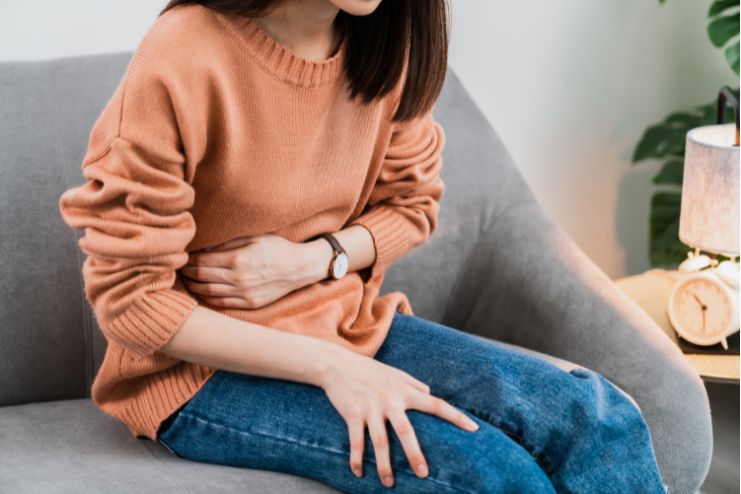
Although the transition to organic pads was certain to have a number of positive changes, everything was not new. Here’s a glimpse at what remained consistent throughout my organic period product experience.
Period Flow and Cramps Stayed the Same
Let’s get real—going organic with pads didn’t wave a magic wand and cure my period. My cramps and flow were still the same.
There’s a false belief that natural alternatives to traditional pads somehow cure period pain or slow down the flow, but that wasn’t my experience. Organic pads are kinder to the skin, but they’re not a medicine for menstrual symptoms.
Still Had to Change Pads Just as Frequently on Heavy Days
Even after the move to organic, I still needed to change pads as frequently on heavy flow days. Organic cotton pads are sturdy and similar in absorbency to regular pads, but they do not delay frequent changes.
If you’re looking for fewer trips to the bathroom, this may be a wake-up call. Performance-wise, in my organic cotton pads experience, they got the job done fine, but they were no miracle product.
Slightly More Expensive Than Regular Options, but Not Drastically
Indeed, organic pads are slightly more expensive than regular pads. Organic products are usually a touch pricier, but not by much.
I viewed it as paying a few extra bucks for peace of mind and cleaner ingredients. If you’re on a budget, you’ll need to search out companies with packages or subscription services for a better bargain.
Discreet Packaging and Availability Varied by Brand/Store
Another small setback? Availability and packaging. Some brands did have discreet, travel-sized packaging, whereas others did not. Also, depending on where you shop, you may not find your favorite organic brand readily available.
So, although chemical-free feminine hygiene has its victories, it’s still catching up when it comes to mainstream availability.
Read More: Pressure Points for Period Cramps
Unexpected Pros

Apart from comfort and safety, my organic cotton pads experience had a couple of nice surprises. Here are some nice surprises, but welcome benefits of organic cotton pads that made the transition all the more worth it.
Felt Good Knowing I Was Using Non-Toxic Materials on My Body
The biggest surprise advantage of making the transition to organic pads was the peace of mind. I had no idea how much low-key stress I had over using chemical-laden products each month. Regular pads might have chemicals in them, such as chlorine, phthalates, and artificial fragrances, that can interfere with hormones or cause skin irritation.
The knowledge that I was now using natural alternatives to conventional pads had a huge impact on how I felt physically and mentally. It empowered me to choose something cleaner and healthier for my body.
Reduced Plastic Waste = Less Guilt
I was not expecting to feel such intense emotional relief from minimizing plastic waste. From their packaging to the pads themselves, standard pads are made entirely of plastic. Their decomposition could take hundreds of years.
Compare this to most organic pads, which are biodegradable sanitary products that break down naturally and rapidly. Each time I discarded one, I felt somewhat less guilty about adding to landfills. It’s a minor step, but it seemed like I was helping.
Trusted Brands Offered Subscription Options and Carbon-Neutral Shipping
Another surprise victory? Convenience. Most sustainable period product companies now have subscription models, so you never go without them during your cycle. They ship with recyclable packaging and use carbon-neutral delivery.
These extra considerations—from avoiding unsafe, chemically based feminine hygiene to offsetting my carbon footprint—made my organic cotton pads experience strangely gratifying.
Read More: Things to Avoid During Periods
Some Organic Pads That I Tried
1. Rael Organic Cotton Cover Pads
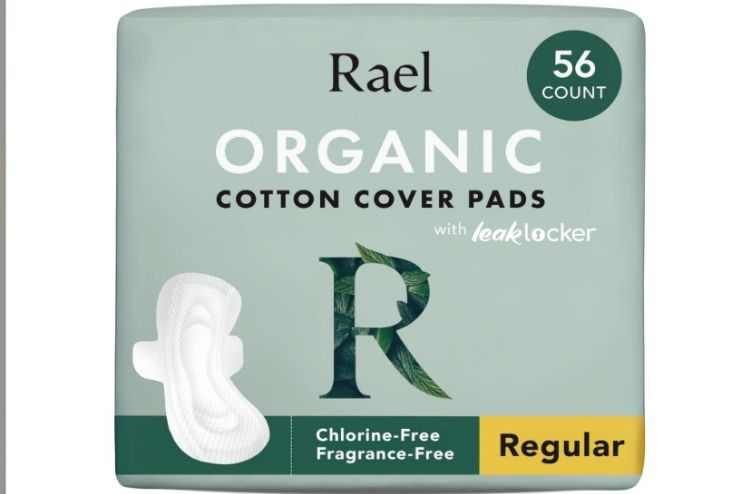
Features:
- Crafted with a 100% certified organic cotton top sheet sourced from Texas, ensuring a soft and breathable experience.
- Equipped with a super absorbent Leak Locker core that provides up to 8 hours of dryness and comfort.
- Hypoallergenic, free from chlorine, and fragrances for use on sensitive skin.
- Available in multiple sizes, ranging from Regular to Large and Overnight, to address different levels of flow.
2. RPE Ultra-Thin Pads
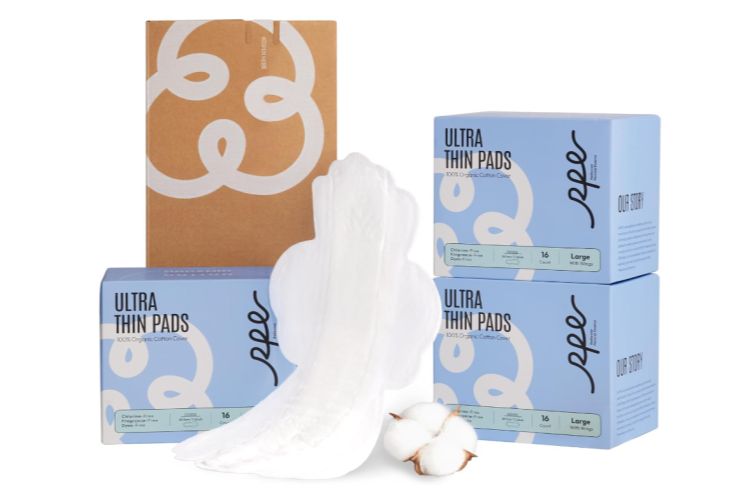
Features:
- Made of 100% GOTS-certified organic cotton, providing a soft touch for sensitive skin.
- Designed with innovative absorption technology and stay-strong wings to avoid leaks on active days.
- Include breathable and hypoallergenic materials to minimize irritation and odor control.
- Completely plastic-free and biodegradable, promoting a sustainable and zero-waste lifestyle.
3. The Honey Pot Company – Non-Herbal Super Pads
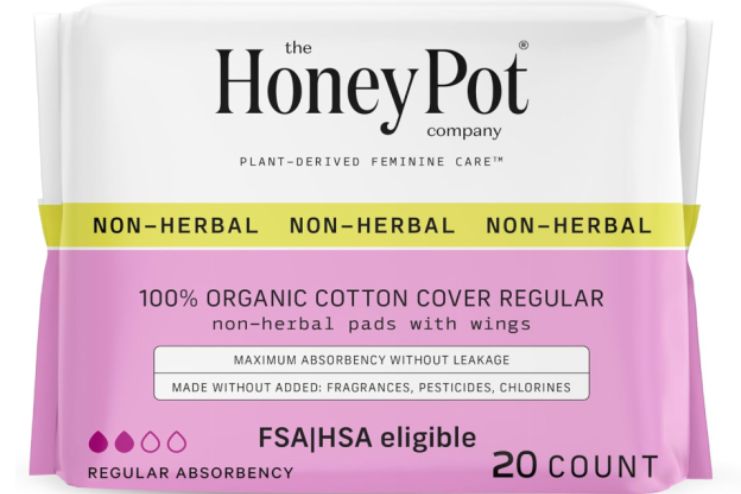
Features:
- Crafted with a certified organic cotton top sheet, ensuring a soft and gentle touch against the skin.
- Designed with an ultra-absorbent pulp core to provide reliable protection during heavy flow days.
- Clinically tested to be gentle on sensitive skin to minimize the risk of irritation.
- The hypoallergenic, fragrance-free, essential oil-free design makes it perfect for those with sensitive skin.
- Fitted with wings to keep the pad in place and avoid leaks.
4. L. Ultra Thin Pads for Women – Overnight Absorbency
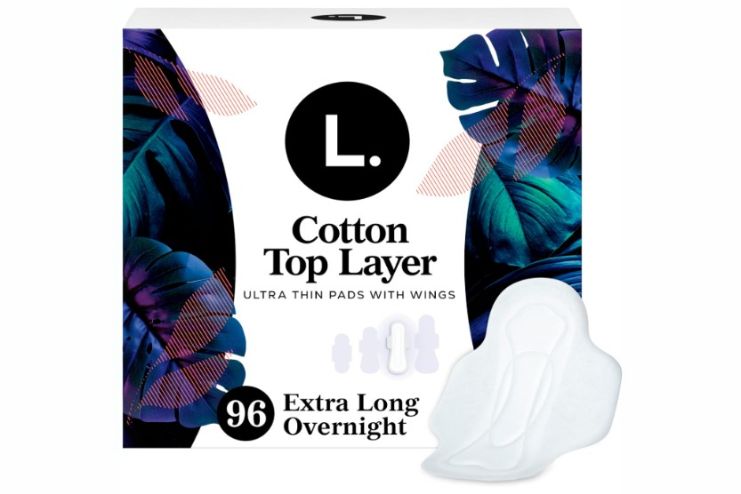
Features:
- Made from a gentle, organic cotton layer that comes in contact with your skin — no dyes, fragrances, or harsh chemicals.
- Lightweight and thin, yet dependable protection for overnight or heavy flow.
- Hypoallergenic and organic cotton construction make them perfect for the irritation-prone.
- Chlorine-free bleaching and designed to be gentle on sensitive skin.
- cares about ethical practices, using responsibly sourced materials and no animal testing.
5. Cora 100% Organic Cotton Topsheet Pads
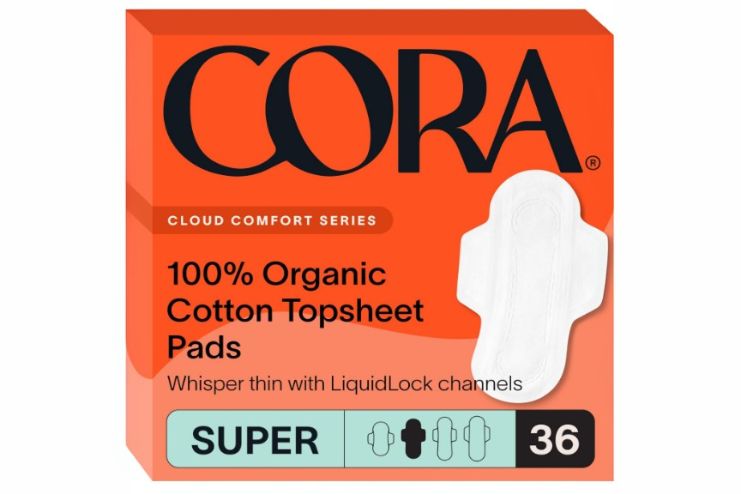
Features:
- Made with a 100% organic cotton topsheet, these pads are hypoallergenic and chlorine-free, fragrance-free, and dye-free, providing sensitive skin with gentle care.
- Ultra-thin and flexible, yet highly absorbent, with a barely-there feel.
- Features smart channels that efficiently draw liquid into the core, combined with side barriers to ensure leak prevention, providing up to 8 hours of protection.
- The ventilated design facilitates airflow, staying cool and comfortable all day long.
- With every purchase, Cora helps make period products and education accessible to those who need them, advocating for menstrual equity.
Things to Keep in Mind if You Want to Switch
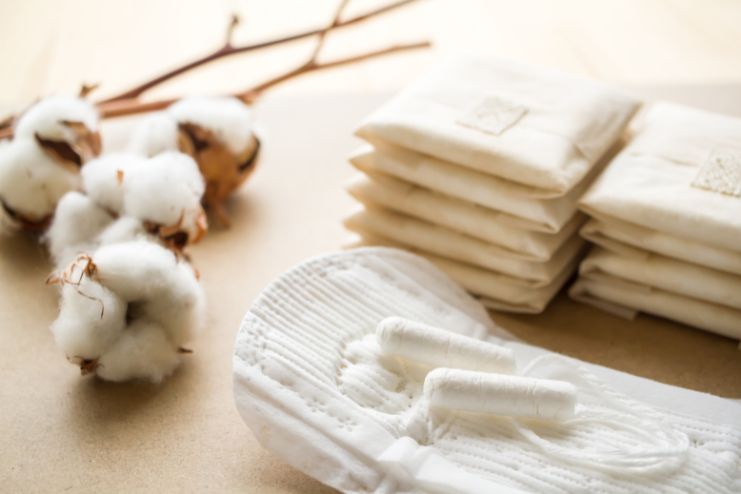
Although the benefits are true, there are a few things to note before completely switching to organic menstrual products. Here is what I discovered from my own experience and research.
Start with Variety Packs
When I first began looking for natural alternatives to traditional pads, I soon learned that not all organic brands have the same feel. Some are thicker, others super-thin, and the fit is different. If you’re new to organic cotton pads, begin with a trial or variety pack.
It’s a wonderful way to discover what works best for your flow, comfort, and lifestyle before purchasing in bulk.
Check for Organic Certification
Just because a pad says “natural” doesn’t mean it’s 100% organic. Some brands still include synthetic materials or use chemical processes.
Look for certified labels like GOTS (Global Organic Textile Standard) or USDA Organic to make sure you’re getting the best non-toxic period products. This matters when you’re asking are organic pads better? Real certification is part of the answer.
Give It Some Time
The transition isn’t always immediate perfection. It took me a couple of cycles to become accustomed to how natural pads felt and how they navigated my flow.
They’re softer and breathable, but the feel and absorbency might feel different. Be patient—your body might take time to get into it.
Prioritize Skin-Friendly Options
If your skin is sensitive, opt for pads that are hypoallergenic, unbleached, and unscented. Sensitive skin period products are also chlorine-free, dye-free, and harsh chemicals-free, saving you from pad rash or irritation.
Opting for biodegradable sanitary pads is a smart and considerate change, but doing it mindfully makes it even better.
Read More: 8 Eco-Friendly Period Options
Conclusion
Going organic didn’t alter my period, but it altered the way I think about what I put on my body every month. Though the flow, cramps, and routine remained largely the same, there was a definite difference in how my skin felt and the peace of mind I enjoyed.
Knowing that I was wearing pads made from organic cotton and not containing chlorine, PFAS, synthetic fragrances, or dyes made me feel more secure and more in charge of my health.
For anyone who deals with irritation or rashes or simply questions what goes into conventional products, switching to chemical-free feminine hygiene like organic pads is worth considering.
These products are not only gentler on sensitive skin but are also designed with environmental impact in mind. With biodegradable sanitary pads and sustainable period products, you’re reducing plastic waste while supporting brands committed to clean, non-toxic ingredients.
If you’ve been wondering whether organic pads are the way to go, it might come down to whether you prioritize comfort, safety, and sustainability. Your period is just a natural part of life, and what you use should not come at the expense of your health or the planet. When it comes to your period, comfort and safety should never be negotiable.
References
- https://pmc.ncbi.nlm.nih.gov/articles/PMC9876534/
- https://www.bemewoman.com/blogs/be-me/comprehensive-guide-to-organic-sanitary-pads
- https://mahina.co/blogs/articles/is-it-safe-to-use-scented-feminine-products
- https://nuawoman.com/blog/safe-sanitary-pads-what-makes-a-pad-not-harmful-for-use/
- https://www.myavni.com/blogs/explorewithavniblog/organic-pads-vs-regular-pads-which-is-better
- https://mycarmesi.com/blogs/f/why-should-you-switch-to-natural-and-organic-sanitary-pads
- https://www.onlymyhealth.com/why-cotton-pads-are-better-than-regular-pads-1663672670
- https://www.onlymyhealth.com/reasons-why-you-should-switch-to-organic-sanitary-pads-1560771060
- https://iwaponline.com/washdev/article/13/2/63/93386/An-exploration-of-market-organic-sanitary-products
- https://www.peesafe.com/blogs/news/organic-cotton-pads-vs-regular-synthetic-pads
- https://sundayguardianlive.com/culture/organic-sanitary-pads-new-game-changer
- https://grewind.com/the-rise-of-organic-cotton-why-its-vital-for-healthier-greener-sanitary-pads/
- https://www.mamaquilla.in/2023/07/01/benefits-of-organic-pads-for-menstrual-health/
- https://www.getrael.com/blogs/r-blog/why-use-organic-pads
- https://www.onlymyhealth.com/reasons-why-you-should-switch-to-organic-sanitary-pads-1560771060
- https://www.getrael.com/blogs/r-blog/why-use-organic-pads
- https://www.natracare.com/blog/6-reasons-to-choose-organic-tampons-and-natural-pads/
- https://www.verywellhealth.com/pad-rash-8703645
In this Article














